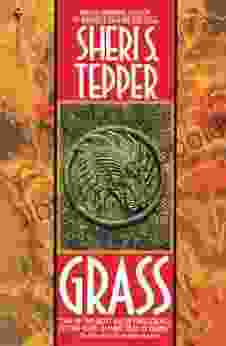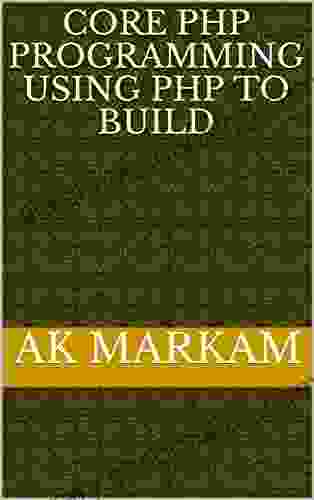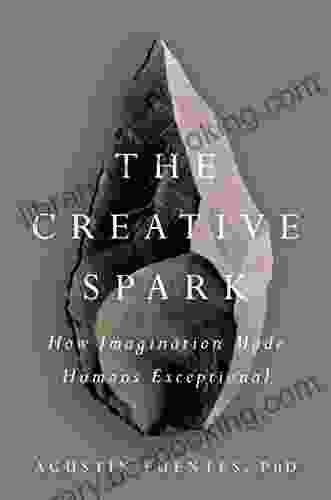Master PHP Programming: A Comprehensive Guide to Building Dynamic Web Applications

Chapter 1: to PHP
PHP (Hypertext Preprocessor) is a widely-used open-source scripting language specifically designed for web development. It allows you to create dynamic and interactive web pages that respond to user input and perform complex operations. This chapter introduces you to the basics of PHP, including its syntax, data types, variables, operators, and control structures.
4.5 out of 5
| Language | : | English |
| File size | : | 9556 KB |
| Text-to-Speech | : | Enabled |
| Enhanced typesetting | : | Enabled |
| Print length | : | 771 pages |
| Screen Reader | : | Supported |
Key Concepts:
- Server-side scripting: PHP code executes on the server, producing HTML output that is sent to the client's browser.
- Dynamic content: PHP allows you to generate content based on user input, database queries, or other dynamic sources.
- Platform independence: PHP can run on different operating systems and web servers, making it a versatile choice.
Chapter 2: PHP Syntax and Data Types
This chapter delves into the syntax of PHP, covering topics such as semicolon usage, comments, and the different types of data it can handle. You will learn about data types like integers, floats, strings, arrays, and objects, and how to perform operations on them.
Key Concepts:
- Syntax rules: PHP has specific syntax rules that you must follow to write valid code.
- Data type conversion: PHP provides functions to convert data between different types.
- Type casting: You can explicitly convert data to a specific type using type casting.
Chapter 3: Variables and Operators
Variables are used to store data in PHP. This chapter covers the different types of variables (e.g., local, global, static),their scope, and how to declare and use them effectively. You will also learn about the various operators available in PHP, including arithmetic, comparison, logical, and assignment operators.
Key Concepts:
- Variable scope: Variables can have different scopes, determining their accessibility within different parts of your code.
- Operators: Operators are used to perform operations on data, such as addition, subtraction, and comparison.
- Operator precedence: Operators have different precedence levels, determining the Free Download in which they are evaluated.
Chapter 4: Control Structures
Control structures enable you to control the flow of execution in your PHP code. This chapter introduces you to conditional statements (e.g., if-else, switch-case),loop structures (e.g., for, while, do-while),and jump statements (e.g., break, continue, return).
Key Concepts:
- Conditional statements: Conditional statements allow you to execute code based on specific conditions.
- Loop structures: Loop structures are used to execute code multiple times until a specified condition is met.
- Jump statements: Jump statements allow you to alter the flow of execution, such as exiting loops or jumping to specific sections of code.
Chapter 5: Functions
Functions are reusable blocks of code that can be called multiple times throughout your program. This chapter teaches you how to define, call, and use functions, including built-in functions and user-defined functions. You will also learn about function parameters, return values, and how to handle function errors.
Key Concepts:
- Function definition: Functions are defined using the function keyword.
- Function parameters: Parameters allow you to pass data to functions.
- Return values: Functions can return values, allowing you to retrieve data from them.
Chapter 6: Arrays
Arrays are data structures that can store a collection of data items. This chapter covers different types of arrays (e.g., indexed, associative, multidimensional),how to create and manipulate arrays, and how to perform common operations such as sorting, searching, and merging arrays.
Key Concepts:
- Array types: Different array types allow you to store data in various ways.
- Array functions: PHP provides a range of functions for working with arrays.
- Array iteration: You can iterate over arrays using foreach loops or array functions.
Chapter 7: Object-Oriented Programming
Object-oriented programming (OOP) is a programming paradigm that enables you to organize code into reusable and maintainable objects. This chapter introduces you to the concepts of OOP in PHP, including classes, objects, inheritance, polymorphism, and encapsulation.
Key Concepts:
- Classes and objects: Classes define the blueprint for objects, and objects are instances of classes.
- Inheritance: Inheritance allows you to create new classes based on existing classes.
- Polymorphism: Polymorphism allows objects of different classes to respond to the same method call in different ways.
Chapter 8: Database Connectivity
PHP enables you to connect to and interact with databases. This chapter covers how to connect to different types of databases (e.g., MySQL, PostgreSQL),execute SQL queries, retrieve and manipulate data, and handle database errors.
Key Concepts:
- Database connections: You can establish connections to databases using PHP functions.
- SQL queries: SQL (Structured Query Language) is used to interact with databases.
- Database manipulation: PHP provides functions for inserting, updating, and deleting data in databases.
Chapter 9: Error Handling
Error handling is crucial for developing robust PHP applications. This chapter teaches you how to handle different types of errors (e.g., syntax errors, runtime errors),use exception handling, and create custom error handlers.
Key Concepts:
- Error types: PHP can generate different types of errors.
- Exception handling: Exceptions are objects that represent errors or exceptions.
- Custom error handlers: You can define your own error handlers to customize error handling.
Chapter 10: Advanced PHP Techniques
This chapter covers advanced PHP techniques that can enhance your web development skills. You will learn about topics such as file handling, regular expressions, session handling, and working with XML and JSON data.
Key Concepts:
- File handling: PHP provides functions for reading, writing, and manipulating files.
- Regular expressions: Regular expressions are used for pattern matching and string manipulation.
- Session handling: Session handling allows you to store and retrieve user-specific data across multiple web pages.
With this comprehensive guide to PHP programming, you will gain a solid foundation and the skills necessary to build dynamic and interactive web applications. Whether you are a beginner or an experienced developer, this ebook will equip you with the knowledge and techniques to excel in PHP development.
Call-to-Action:
Download your copy of "Core PHP Programming: A Comprehensive Guide to Building Dynamic Web Applications" today and embark on your journey to PHP mastery!
4.5 out of 5
| Language | : | English |
| File size | : | 9556 KB |
| Text-to-Speech | : | Enabled |
| Enhanced typesetting | : | Enabled |
| Print length | : | 771 pages |
| Screen Reader | : | Supported |
Do you want to contribute by writing guest posts on this blog?
Please contact us and send us a resume of previous articles that you have written.
 Book
Book Novel
Novel Page
Page Chapter
Chapter Text
Text Story
Story Genre
Genre Reader
Reader Library
Library Paperback
Paperback E-book
E-book Magazine
Magazine Newspaper
Newspaper Paragraph
Paragraph Sentence
Sentence Bookmark
Bookmark Shelf
Shelf Glossary
Glossary Bibliography
Bibliography Foreword
Foreword Preface
Preface Synopsis
Synopsis Annotation
Annotation Footnote
Footnote Manuscript
Manuscript Scroll
Scroll Codex
Codex Tome
Tome Bestseller
Bestseller Classics
Classics Library card
Library card Narrative
Narrative Biography
Biography Autobiography
Autobiography Memoir
Memoir Reference
Reference Encyclopedia
Encyclopedia Steve Cohen
Steve Cohen Sonia Pressman Fuentes
Sonia Pressman Fuentes Nancy Duarte
Nancy Duarte S L Partee
S L Partee The Group Of 33
The Group Of 33 Steve Solomon
Steve Solomon Walter Greiner
Walter Greiner Marie Louise
Marie Louise Kristi Belcamino
Kristi Belcamino Marie Arana
Marie Arana Michael Hingson
Michael Hingson Sam Fury
Sam Fury Mallory Loehr
Mallory Loehr Peter Liljedahl
Peter Liljedahl Sam Dogen
Sam Dogen Kristy Dilworth
Kristy Dilworth Rahna Reiko Rizzuto
Rahna Reiko Rizzuto Robert Mayhew
Robert Mayhew N Davis
N Davis Nicholas Guenther
Nicholas Guenther
Light bulbAdvertise smarter! Our strategic ad space ensures maximum exposure. Reserve your spot today!
 Osamu DazaiFollow ·3.3k
Osamu DazaiFollow ·3.3k Daniel KnightFollow ·2.7k
Daniel KnightFollow ·2.7k Ricky BellFollow ·14.3k
Ricky BellFollow ·14.3k Joshua ReedFollow ·8.8k
Joshua ReedFollow ·8.8k Juan ButlerFollow ·17.5k
Juan ButlerFollow ·17.5k Fletcher MitchellFollow ·2.8k
Fletcher MitchellFollow ·2.8k Alexander BlairFollow ·9.4k
Alexander BlairFollow ·9.4k Ike BellFollow ·19.4k
Ike BellFollow ·19.4k

 Brian Bell
Brian BellExploring The Natural World Through Mindful Expressive...
Unleash the...

 David Baldacci
David BaldacciJourney into the Enigmatic World of "Grass" by Sheri S....
Prepare to be captivated by "Grass," a...

 Dashawn Hayes
Dashawn HayesBusting Myths About Human Nature: Unraveling the Complex...
Challenging the...

 Ernest Hemingway
Ernest HemingwayNotes on Suicide: A Profound Exploration of the...
Suicide, a taboo subject shrouded in...
4.5 out of 5
| Language | : | English |
| File size | : | 9556 KB |
| Text-to-Speech | : | Enabled |
| Enhanced typesetting | : | Enabled |
| Print length | : | 771 pages |
| Screen Reader | : | Supported |
















